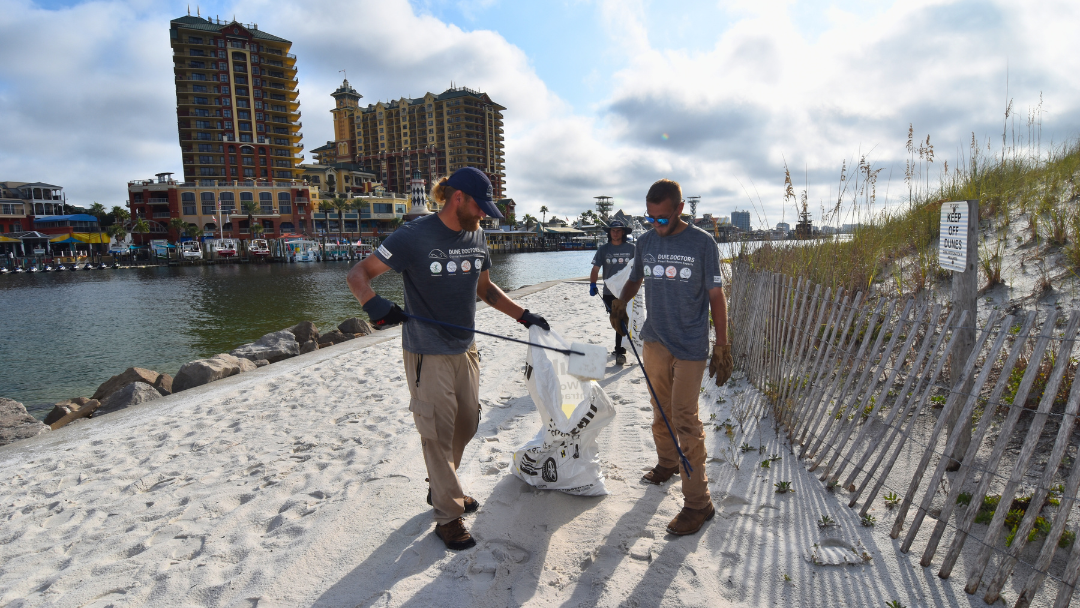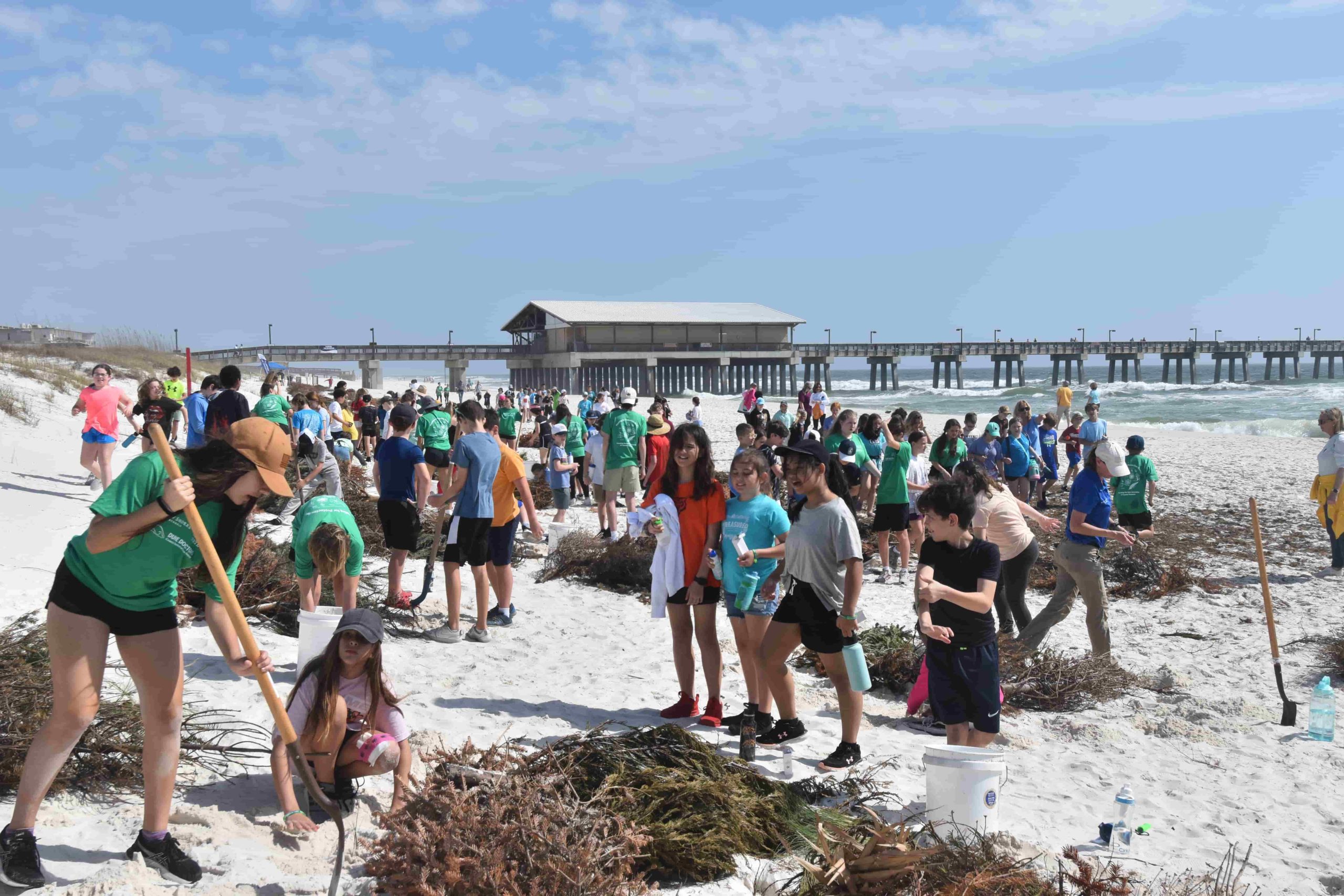Article Highlight: To achieve the highest level of sustainable resiliency, coastal homeowners must have separate, environment-specific maintenance plans for their dune system (white landscape) and recreational lawn (green landscape).
Key Takeaway: Traditional landscaping practices erode protective dunes and compromise coastal ecosystems. Do not attempt to manicure or alter your protective dune without the direction of a coastal restoration expert.
Fast Application: Have our coastal restoration experts work with your landscaping team to address the environment transition from your recreational lawn to your dune system.
1. Frequent Irrigation will Erode Your Protective Dune
Unlike lawns and gardens, dune vegetation does not need regular watering. In fact, installing an irrigation system on your dune will compromise it in the long run. Initially, the plants may appear lush and vibrant. However, the availability of water close to the surface will disrupt the vegetation’s capacity to anchor the sand in place. A shallow source of moisture dissuades the native plants from growing deep roots in search of water. With limited root growth, the plants and your dune will be easily washed away come the first storm. Irrigation also encourages invasive species to colonize the dune and crowd out native plants. If a storm or disease doesn’t kill your plants first, their dependency on the irrigation will. If their water is ever cut, the plants will have no alternative source and will die.
To understand more about the negative impacts of irrigation, watch the video below.

2. Fertilizer Intended for Turf will Damage Native Coastal Plants
The sand along the eastern Gulf Coast is primarily composed of quartz crystal and is nutrient-poor soil. According to the University of Florida, these quartz particles do not “hold water or nutrients very well.” Frequent fertilization might seem like the solution to help your coastal plants develop. However, a publication by North Carolina State University warns against excess fertilization, stating that it may “damage the development” of the plants and “increase the occurrence of plant diseases.” Do not apply fertilizers that are intended for turf on your protective dune. Instead, strengthen your coastal systems by working with a coastal restoration expert to ensure your native vegetation obtains the necessary nutrients. Keep in mind, fertilizer is a powerful chemical, and its misuse will result in environmental damages.
3. All Coastal Restoration Efforts Require Permitting from Regulating Agencies
Dunes function as natural barriers that absorb the impact of storm surge and as sand reserves that can seasonally replenish the beach. Because of their critical role, dunes are protected by law. All coastal restoration efforts need to be approved by local, state, and federal regulating authorities. In the event that a lawn care provider attempts to work on a dune without first obtaining the necessary permits, the coastal property owner is responsible and will be heavily fined regardless of the kind of work that is implemented. As coastal stewards continue to educate themselves about the dune environment, they will report any activities perceived to jeopardize this fragile ecosystem. In 2020, three-dozen Newport Beach, California homeowners illegally landscaped lawns on the beach. The consequences amounted to roughly 1.7 million dollars in fines due to encroachment on public beaches and destruction of the protected dune environment. A manicured lawn is aesthetically pleasing. However, as easy as it may have become for these homeowners to walk to the beach without having to step through any dunes, they also created a smooth path for high tides and storm surges to flood their waterfront homes. With theNewport Beach fiasco in mind, before requesting a lawn care provider that does not specialize in coastal restoration to perform any work on your dunes, consider the high likelihood that they may damage the protected ecosystem, resulting in financial penalties for you.
4. Traditional Landscapers and Coastal Restoration Experts Prioritize the Development of Different Parts of their Plants
The primary factor that differentiates coastal dune maintenance from traditional lawn care is which part of the plant each practice focuses on. Landscapers introduce non-native plants to develop and enhance the aesthetics of a recreational, outdoor area. If tasked with caring for dune vegetation, a lawn care provider may measure the environment’s health by how robust the foliage looks. However, while frequent irrigation and fertilizer may quickly enhance the visible part of dune-building plants, the plants’ stems and leaves are not what stabilize dunes. The vast and complex root systems developed by sea oats (the primary dune-building plant) are what anchors dunes in place. The coastal ecosystem undergoes constant erosion, and native plants are the only force that stabilizes the sand. Therefore, to protect coastal ecosystems, Dune Doctors measures the health of the environment by root growth and not stem growth. According to Carrie Stevenson, the University of Florida’s coastal sustainability agent for Escambia County, sea oats’ roots can grow up to 40ft deep! Homeowners can encourage this tremendous growth by working with a coastal restoration expert to implement an environment-specific maintenance plan designed for their protective dune system.
Work with Dune Doctors to Address the Environment Transition from your Recreational Lawn to your Protective Dune
Both the maintenance of your recreational lawn and protective dune require corresponding experts who can meet the unique needs of these two different environments. Enlist our coastal restoration experts to evaluate the transition from your lawn to your protective dune. Have our team address any potential weak points or erosion-prone areas along your property. Many forces act daily to damage and reshape your protective dune, so identifying erosion threats within your control can help mitigate damages to your coastal property. Partner with Dune Doctors today to begin naturally fortifying your dune, so you can achieve the highest level of sustainable coastal resiliency.






